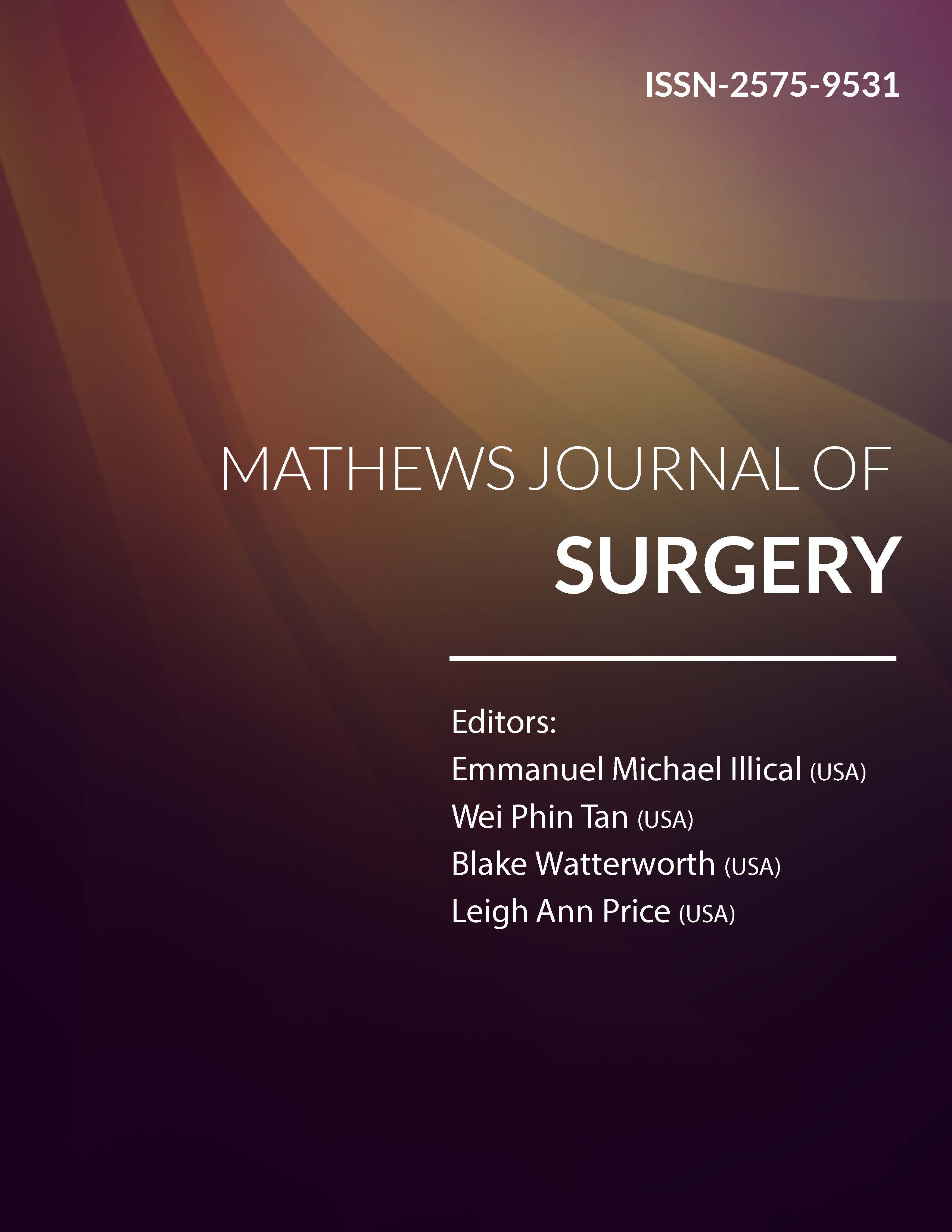
Information Links
Previous Issues Volume 2, Issue 1 - 2018
Trifecta Aortic Valve Replacement in Elderly and Polymorbid Patients: Clinical and Echocardiographic Follow-Up
Francesco Venditti1 , Pierluigi Stefàno2 , Ramona Santangeli2 , Claudio Blanzola2 , Maria Riccarda Del Bene1 , Sabina Caciolli2 , Stefano Del Pace2 , Giuseppe Barletta1
1Cardiology Diagnostics, Cardio-Thoracic and Vascular Department, Careggi University Hospital, Florence, Italy.
2Cardiac Surgery, Cardio-Thoracic and Vascular Department, Careggi University Hospital, Florence, Italy.
Corresponding Author: Giuseppe Barletta, Cardiologia Diagnostica – AOU Careggi, Largo Brambilla, 3 - 50124 Florence, Italy, Tel: +39 55 410895; Email: [email protected]
Received Date: 03 Oct 2018
Accepted Date: 09 Oct 2018
Published Date: 12 Oct 2018
Copyright © 2018 Barletta G
Citation: Venditti F, Stefàno P, Santangeli R, Blanzola C, et al. (2018). Trifecta Aortic Valve Replacement in Elderly and Polymorbid Patients: Clinical and Echocardiographic Follow-Up. M J Surg. 2(1): 013.
ABSTRACT
Objectives: We sought to evaluate the hemodynamic performance and clinical outcome of the St. Jude Medical Trifecta aortic bioprosthesis in a large single-center series of consecutive polymorbid, moderate-to-high surgical risk elderly patients.
Methods: Between January 2014 and January 2015, 250 consecutive patients undergoing aortic valve replacement at Careggi University Hospital, Florence, received a Trifecta aortic bioprosthesis. 202 patients (46.4% females, mean age 79.9±4 years) were enrolled in the present follow up study. Clinical and echocardiographic data were collected preoperatively and at one year after surgery.
Results: the most prevalent indication for aortic valve replacement was stenosis (51.5%), followed by mixed pathology (29.7%), regurgitation (14.4%), prosthetic valve degeneration (3.5%) and endocarditis (1%). Preoperative functional class was NYHA III in 67.8% and NYHA IV in 12.4 %; logistic EuroSCORE was moderately high (13.5±6.4). Most patients (73%) underwent concomitant surgical procedures. Global mortality was 9.6% (24 patients), early mortality being 1.6% (4 patients). Adverse events included five thromboembolic events and four prosthetic valve endocarditis; early prosthetic valve degeneration occurred in one. At one-year follow-up, mean gradients ranged from 6.0±2.7 and 12.1±8.6 for the 27 and 19 mm valve, respectively. Indexed effective prosthesis area ranged from 0.73 to 1.16 cm2/m2 for the 19 and 25 mm valve, respectively.
Conclusion: St. Jude Medical Trifecta aortic bioprosthesis confirmed excellent hemodynamic profile and achieved good clinical results when offered to elderly patients with high incidence of co-morbidities and moderately high preoperative risk, who underwent concomitant surgical procedures in high percentage of cases.
KEYWORDS
Aortic Valve Replacement; Aortic Bioprosthesis; Doppler Echocardiography; Octuagenarians; Polymorbidity